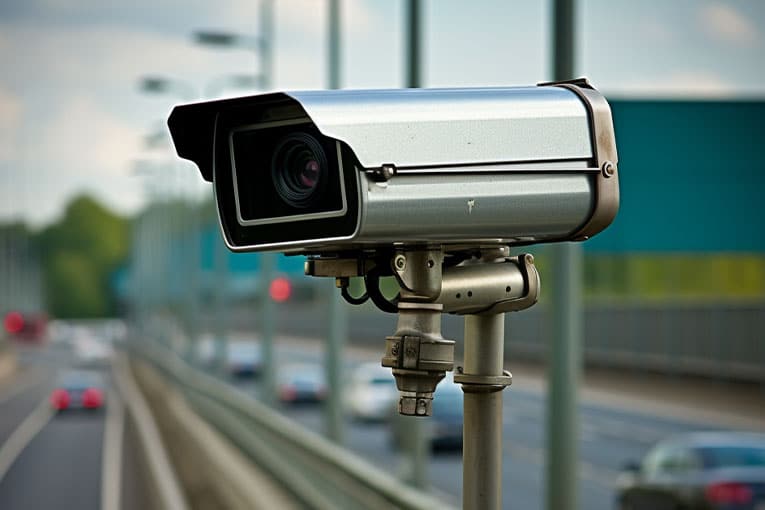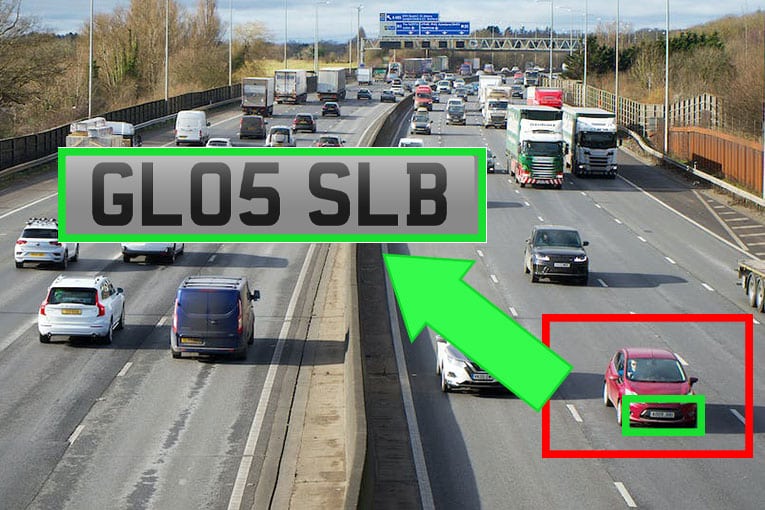Cyber Security News Aggregator
.Cyber Tzar
provide acyber security risk management
platform; including automated penetration tests and risk assesments culminating in a "cyber risk score" out of 1,000, just like a credit score.What are ANPR Cameras?
published on 2023-11-07 09:00:00 UTC by Simon BurgeContent:
Modern innovations in technology have significantly shaped the way we navigate our daily lives.
One such innovation that has left an indelible mark on various aspects of our society is the Automatic Number Plate Recognition (ANPR) camera.
These unobtrusive yet highly sophisticated devices have emerged as a cornerstone of modern security, law enforcement, and traffic management systems.
They represent a fascinating fusion of optics, artificial intelligence, and data analytics, contributing to more efficient and secure urban environments.
In this article, we will embark on a journey to understand the inner workings and applications of ANPR cameras.
By exploring how ANPR cameras operate, where they are typically deployed, the data they collect, and their numerous advantages and disadvantages, we will gain an insightful perspective on the impact of this powerful technology.
What are ANPR Cameras?
At their core, ANPR cameras are highly specialised devices designed to automatically detect, recognize, and record licence plate information from vehicles.
These cameras employ a fusion of cutting-edge technologies to carry out their tasks with remarkable precision and speed.

The central function of ANPR cameras revolves around their ability to capture licence plate data in real-time.
As a vehicle passes within the camera’s field of view, it records an image of the licence plate and advanced software processes this image, extracting the licence plate.
What are ANPR Cameras Used for?
ANPR cameras have carved a niche for themselves in various sectors due to their versatility and effectiveness.
Traffic Management
ANPR cameras are traffic management workhorses.
They assist in regulating the flow of vehicles, easing congestion, and enhancing road safety.
By tracking vehicle movements, authorities can optimise traffic signals, manage high-traffic areas, and even implement dynamic speed limits based on real-time conditions.
Law Enforcement
In law enforcement, ANPR cameras are potent tools.
They play a pivotal role in identifying stolen vehicles, locating suspects, and enforcing traffic laws.
When a vehicle of interest enters the camera’s view, the system can trigger alerts, notifying police to take action.
Parking Control
ANPR systems are essential in parking management.
They ensure that vehicles park in designated areas, assist in preventing unauthorised parking, and enable efficient management of parking facilities.
Pay-and-display systems often use ANPR cameras to automate payment and access control.
Toll Collection
ANPR is the backbone of modern electronic toll collection systems.
By capturing licence plate information, toll booths can automate payments, eliminating the need for manual toll collection and substantially reducing traffic congestion at toll plazas.
Border Control
ANPR cameras play a critical role in securing international borders.
They monitor vehicles crossing borders, check for compliance with customs and immigration requirements, and contribute to border control.
Surveillance and Security
ANPR cameras bolster surveillance and security in various contexts.
They monitor access points to secure facilities, automatically recognizing authorised vehicles and identifying potential threats or security breaches.
Retail and Marketing
ANPR data isn’t just about licence plates; it’s about customer behaviour.
Retailers employ ANPR systems for customer analytics, tracking store visits, measuring foot traffic, and even managing parking facilities to enhance the overall shopping experience.
Car Parks and Residential Communities
ANPR systems control access to private car parks and gated residential communities.
They allow authorised vehicles to enter seamlessly while keeping out unauthorised ones, bolstering security and providing residents with convenient, automated access.
ANPR cameras have, thus, become indispensable in multiple sectors, streamlining operations, enhancing security, and contributing to data-driven decision-making processes.
Their utility continues to expand as technology evolves, making them an integral part of our modern infrastructure.
How do ANPR Cameras Work?
ANPR cameras constitute a sophisticated amalgamation of hardware and software components, intricately designed to meticulously capture and process licence plate information.
These cameras are strategically positioned in diverse locations such as roadways, toll booths, parking lots, and other relevant sites.
They operate seamlessly around the clock, continuously capturing images of passing vehicles and their associated licence plates.
To shed light on the inner workings of ANPR cameras, we’ll delve into the nuanced processes that facilitate their remarkable functionality.
The foundational step in ANPR cameras’ operation is image capture.
Equipped with optical sensors, typically high-resolution cameras, these devices capture images as vehicles traverse their field of view.
The positioning of these cameras is critical, ensuring optimal coverage and image acquisition for subsequent processing.
Following image capture, the gathered images undergo a series of preprocessing procedures.
This phase serves to enhance image quality and readability.
Adjustments in brightness, contrast, and sharpness are meticulously applied to optimise image clarity.
Moreover, noise and artefacts are systematically removed, a vital step in bolstering recognition accuracy.
This preprocessing phase is especially crucial given the variances in licence plate designs and fluctuating lighting conditions that ANPR cameras encounter.
Character segmentation is the subsequent stage in the ANPR process.
After preprocessing, the sophisticated software employed by these cameras adeptly identifies and isolates the characters on the licence plate.
This step is inherently intricate due to the variations in licence plate designs and the dynamic nature of real-world lighting.
To surmount these challenges, advanced algorithms are harnessed, enabling precise location and isolation of individual characters.
At the core of ANPR technology lies Optical Character Recognition (OCR).

This is where OCR algorithms meticulously analyse the characters, unravelling their visual patterns and translating them into textual data that faithfully represents the licence plate number.
The complexity of this task is underscored by the diverse fonts, styles, and character appearance variations that licence plates exhibit.
ANPR cameras are meticulously trained to excel in these domains, ensuring robust recognition capabilities.
The final step of the ANPR process involves comparing the recognized licence plate number with a meticulously maintained database.
This database, a veritable repository of vehicular information, encompasses diverse datasets, including details about registered vehicle owners, the registration status of the vehicle, or a catalogue of vehicles of interest.
Upon a successful match or the fulfilment of predetermined conditions (such as detecting an expired registration), the ANPR system springs into action. It can trigger alerts or log the pertinent data for further processing.
What Data is Collected on ANPR Cameras?
ANPR cameras are data-centric devices, capturing a range of information vital for their intended applications.
Here’s a detailed breakdown of the data typically collected by these cameras:
Licence Plate Numbers
The primary and most fundamental data collected by ANPR cameras is the alphanumeric characters on licence plates.
These characters are crucial for identifying individual vehicles and are used as the primary data point for various applications.
Timestamps
ANPR cameras record the date and time of each vehicle’s passage.
This timestamp provides critical information for tracking vehicle movements, monitoring traffic patterns, and enforcing time-sensitive regulations.
It enables authorities to precisely document when specific vehicles enter or exit a particular area.
Vehicle Descriptions
In some instances, ANPR systems may capture additional vehicle information beyond the licence plate number.
This supplementary data can include details such as the vehicle’s make, model, colour, and body type.
While not always part of the core data collection, this information can be valuable for enhancing vehicle identification and providing more comprehensive vehicle profiles.
Location Data
ANPR cameras record the geographic location where each licence plate is scanned.
This location data is essential for understanding where vehicles are at specific times and locations.
It forms the basis for traffic management, security, and surveillance applications.
Alerts and Matches
ANPR systems often include features that trigger alerts or matches based on predefined criteria.
When a licence plate matches a watchlist entry or exhibits suspicious activity (e.g., a stolen vehicle or a vehicle linked to criminal investigations), the system generates alerts.
These alerts are logged, allowing law enforcement or security personnel to take immediate action as necessary.
What are the Advantages of ANPR Cameras?
ANPR cameras have gained widespread adoption due to the array of advantages they offer.
Efficiency
ANPR cameras automate tasks that would otherwise be time-consuming and labour-intensive.
For example, in toll booths or parking facilities, ANPR technology eliminates the need for manual ticketing or payment processing, resulting in faster throughput and reduced wait times for users.
Enhanced Security
ANPR cameras play a pivotal role in enhancing security.
They can quickly identify stolen vehicles by comparing captured licence plates against databases of stolen vehicles.
Additionally, ANPR systems assist law enforcement in tracking down suspects and identifying vehicles linked to criminal activities.
Traffic Management
ANPR technology is integral to intelligent traffic management systems.

By monitoring and analysing vehicle movements, traffic managers can gain insights into congestion patterns and optimise traffic flow in real-time.
This not only reduces traffic jams but also minimises fuel consumption and emissions.
Accurate Data
ANPR systems provide highly accurate licence plate recognition.
The use of advanced optical character recognition (OCR) algorithms ensures precise identification of characters on licence plates, even in challenging conditions like low lighting or adverse weather.
Cost Savings
ANPR technology can lead to substantial cost savings.
For instance, in electronic toll collection systems, it eliminates the need for manual toll collection personnel and reduces the occurrence of toll evasion.
Similarly, in parking facilities, it streamlines access control and payment processing, reducing operational costs.
Convenience
ANPR cameras bring added convenience to various aspects of daily life.
Drivers benefit from faster and hassle-free experiences, such as seamless passage through toll booths or automated access to secured parking areas.
This improved convenience can lead to higher customer satisfaction.
Versatility
ANPR technology is highly versatile and adaptable.
It can be integrated into a wide range of applications, from monitoring border crossings to managing access control for gated communities.
Its flexibility makes it an indispensable tool for various industries and sectors.
Data Analysis
ANPR systems generate vast amounts of data that can be harnessed for data analysis.
This data can provide valuable insights into traffic patterns, customer behaviour, and other relevant metrics.
Businesses and authorities can use this information to make informed decisions and optimise their operations.
Compliance and Enforcement
ANPR cameras can be used for enforcing compliance with regulations, such as vehicle emissions standards or urban access restrictions.
They can identify non-compliant vehicles and trigger appropriate actions or fines, helping to maintain environmental and urban planning objectives.
What are the Disadvantages of ANPR Cameras?
While ANPR cameras offer numerous benefits, they are not without their disadvantages.
Privacy Concerns
One of the most significant concerns associated with ANPR systems is privacy.
These cameras involve continuous monitoring of vehicles and the collection of licence plate data, which can be seen as an intrusion into individuals’ personal information.
There are worries about how this data may be used, shared, or retained, raising concerns about civil liberties and surveillance.
Data Security
ANPR systems handle sensitive data—the licence plate numbers and associated information.
Ensuring the security of this data is crucial to prevent unauthorised access, misuse, or data breaches.
Any security lapses can have serious consequences for individuals’ privacy and security.
Maintenance Costs
The installation and upkeep of ANPR cameras can be costly.
These systems require regular maintenance to ensure their proper functioning, which includes cleaning cameras, updating software, and replacing faulty hardware.
For some organisations, particularly smaller ones, these costs may be prohibitive.
False Positives
No technology is infallible, and ANPR systems can make errors in licence plate recognition.
False positives, where a vehicle is mistakenly identified as a match to a database entry, can occur due to various factors like poor image quality, non-standard licence plates, or misinterpretation of characters.
These errors can lead to unwarranted alerts or actions.
Reliance on Technology
Over-reliance on ANPR technology can lead to vulnerabilities.
If the system experiences technical issues or downtime, it can disrupt operations that depend on it, such as toll collection or law enforcement activities.
It’s crucial to have backup procedures in place to handle such situations.
Data Retention and Use
The retention and use of ANPR data can be a subject of concern.
There are worries about how long this data is stored and whether it is used for purposes beyond its initial intent.
Striking a balance between retaining data for legitimate purposes and respecting individuals’ privacy rights is a complex challenge.
Ethical Considerations
Beyond legal and privacy concerns, there are ethical considerations surrounding ANPR technology.
These include issues related to consent, transparency, and accountability in the use of such systems.
Ensuring that ANPR technology is implemented ethically and transparently is vital to maintain public trust.
Potential for Abuse
There is a potential for ANPR technology to be misused or abused, either by individuals with access to the data or by organisations with ulterior motives.
This underscores the importance of robust regulations and oversight to prevent misuse.
Conclusion
ANPR cameras have transformed traffic management, law enforcement, and various aspects of modern life.
Their ability to efficiently capture and interpret licence plate data has far-reaching applications, from optimising traffic flow to enhancing security.
However, ANPR technology also raises important questions about privacy, data security, and the balance between convenience and surveillance.
As this technology continues to advance, finding the right balance between its advantages and disadvantages remains a crucial societal challenge.
https://securityjournaluk.com/anpr-cameras/
Published: 2023 11 07 09:00:00
Received: 2023 11 07 09:46:51
Feed: Security Journal UK
Source: Security Journal UK
Category: Security
Topic: Security
Views: 11
